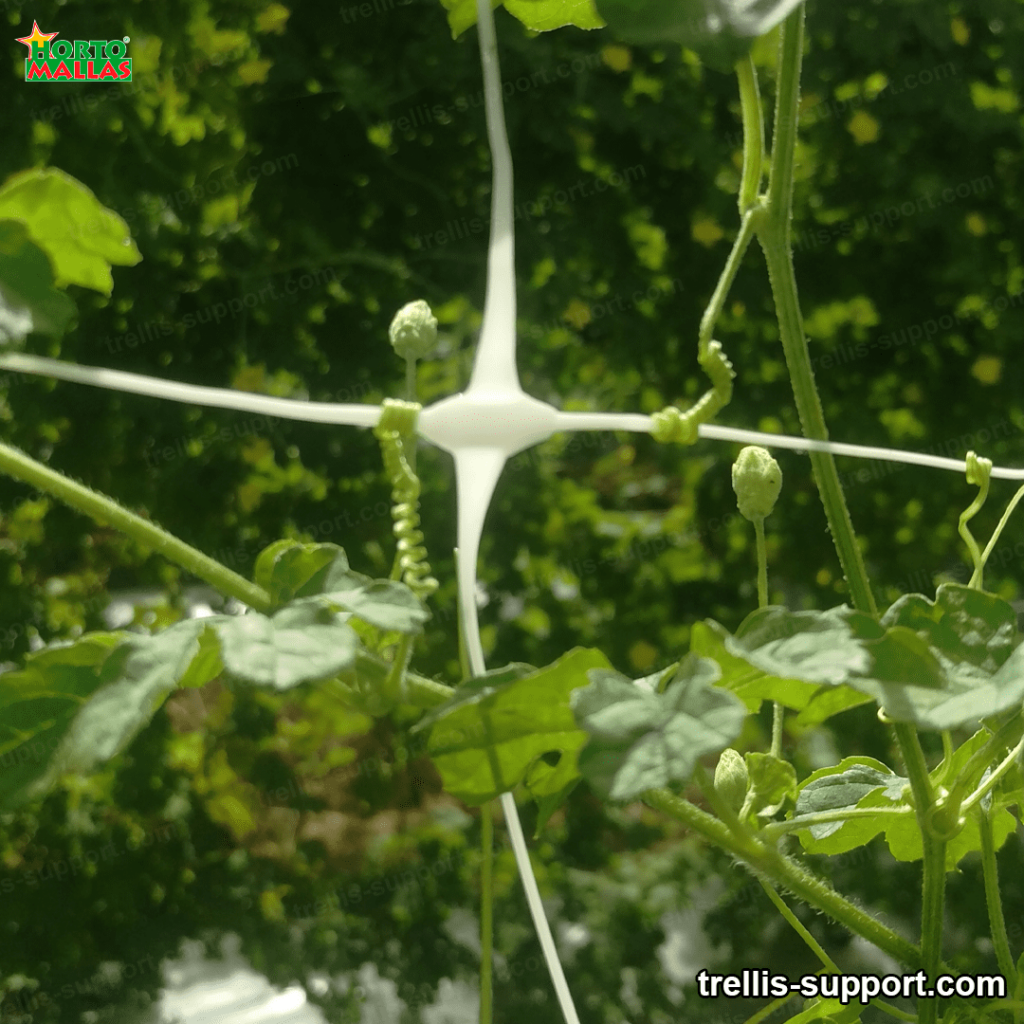Climbing plants are those that cling to supports to reach sunlight and can even reach great heights.
One of the great advantages of climbing netting is that it provides support for plants that are fast growing or grow beyond the height of traditional supports. Climbing netting also provides a safe environment for the climbing plant, preventing injury if the plant becomes entangled in branches and bushes. There are different types of climbing plants that need the support of a climbing screen. For example, vines such as honeysuckle, hedera helix (the best known climbing plant) or the classic clematis are climbing plants that often require a climbing screen to grow successfully.

Other creepers such as jasmine
ivy or lantanas can also use a climbing screen for climbing and are ideal for creating a magnificent green façade or other vertical structures. These climbing plants are very grateful with climbing mesh supports as they allow them to spread and grow quickly, without the need to get entangled in other elements. In addition to vines, there are several species of flowers that can take advantage of the climbing mesh support to bloom luxuriantly. Some of the most popular climbing plants for these supports are: boa noite (also known as Clerodendrum), debodee (a type of flower with twenty petals), Egyptian jasmine or yellow-petaled honeysuckle. These flowers present a great floristic exuberance and do best with the help of a climbing net.
On the other hand, fruit vines can also use climbing net supports to facilitate their development. In this sense, wild vine, kiwi, raspberry bush, blueberry and sea buckthorn are very useful climbing plants for organic orchards. These plants require a very stable support, so a climbing mesh in the form of a column, mast or pillar is the most suitable option.
There is a wide variety of climbing plants that require adequate support to remain stable and grow properly.
. Climbing netting provides support and security for climbing plants such as vines, flowers and fruit plants. This netting comes in different shapes, colors and designs to offer the best solution according to the type of climbing plant.
Why do plants require trellising to function?
Climbing plants are plants that use a variety of adaptations to climb and climb to reach their light, standing out within the vegetation. There are many different species of climbing plants, from vines to evergreen climbing plants. These multifaceted plants can be natural or introduced by man to enhance the landscape. The use of climbing mesh on these plants can be extremely helpful in keeping the plant growing evenly and preventing wind damage.
Rather than climbing netting, there are other methods to help climbing plants climb, such as trellises, tubes, anchored supports, and the like. Climbing netting, however, has become the preferred choice because of its ergonomic workmanship. This is due to its ability to support the plant and evenly distribute its weight. This also makes it possible to reduce the strain on the plant and prevent it from falling, as climbing mesh does not require extreme strength to support the plant.
plants do not have strong appendages and are not likely to attach to the support without extra help.
There are climbing plants that have flat stems, so they seek supports for light and water to allow them to grow. These plants generally benefit from the use of climbing netting to provide a sturdier and wider support for them to grow. It also requires assistance in stabilizing the plant. Because the weight of the plant is balanced and supported, it is less at risk of damage from high winds, pests, diseases and environmental imbalances. This is especially advantageous for climbing plants that are located in windy areas or are exposed to strong storms. Climbing netting maintains stability, which allows the plant to live much longer and produce better results.
Climbing netting has been shown to significantly increase plant survival rates.
This is because climbing mesh provides additional support and helps prevent external damage, which increases plant performance. This is especially important for certain climbing in areas with changing climate, such as drought conditions, rainfall, winter and maturing individuals.
The use of climbing netting to assist climbing plants can provide numerous benefits.
. These include additional plant support, increased plant survival and prevention of external damage caused by wind and inclement weather. Climbing netting is an excellent choice to help climbing plants grow and make the most of their light and water, allowing them to develop better and faster.
Climbing netting is one of the best tools for farmers working with fragile crops. These crops often have sustainability problems due to the lack of structural stability and the difficulty of maintenance. Climbing netting offers a practical and effective solution, providing growers with a series of advantages that improve crop resistance. Among its main functions, it provides a solid, durable and long-lasting structure. This is especially useful for fragile crops, as these have a much more fragile structure and are susceptible to damage. Climbing netting maintains the structure of crops and protects them from adverse external factors and ensures that they maintain their shape. This gives them greater durability and resistance, thus improving the sustainability of fragile crops.